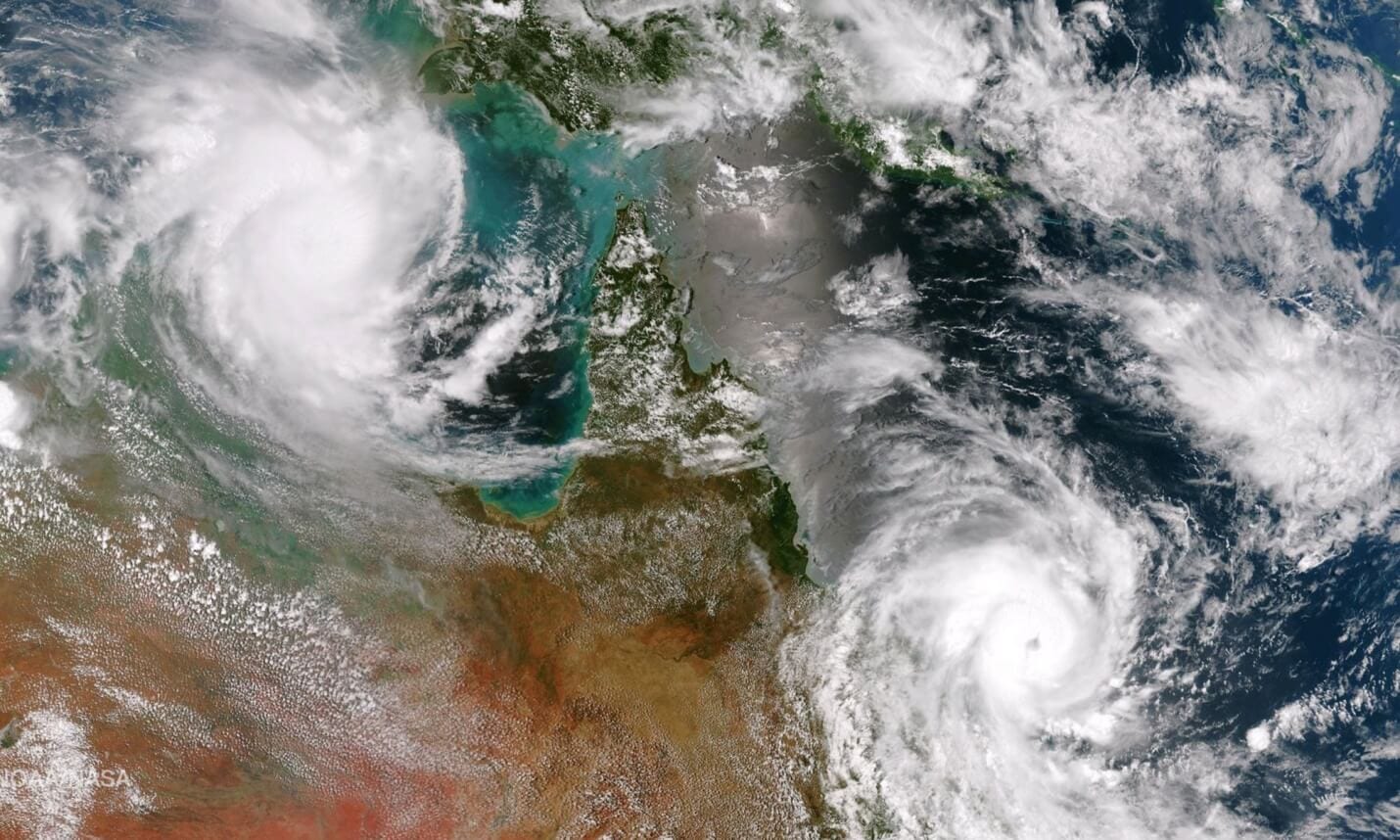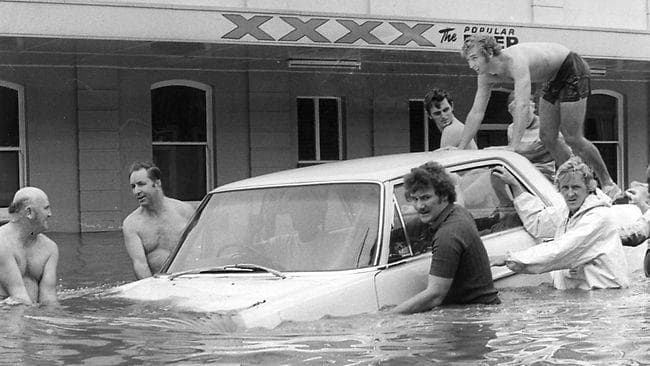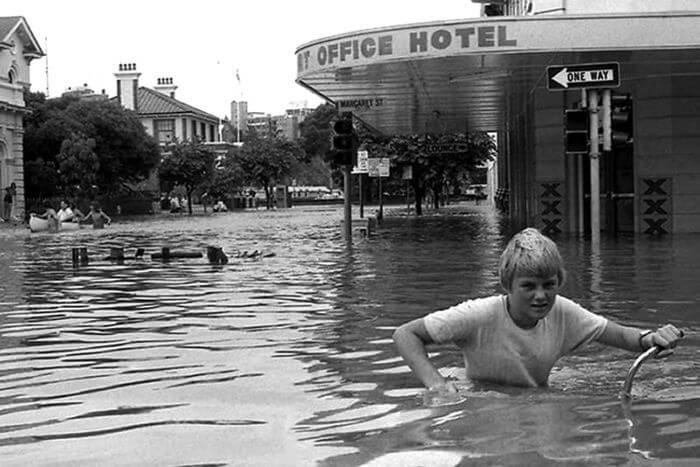Tags: Tropical Cyclones. History. Historical. Queensland. Brisbane. What are cyclones? How do cyclones form?
Tropical cyclones are a major threat to the Queensland coastline during the Summer season as well as to the Northern Territory and Western Australia. These tropical disturbances are caused by deep low-pressure systems that form over the warm waters of the tropics and sometimes, depending on sea surface temperature and other factors can form over subtropical areas as well.
Featured image(above): Cyclone Yasi: February 2-7, 2011
They rotate clockwise in the southern hemisphere, and anti-clockwise in the northern hemisphere and have different names depending on where you are located on earth. North America refers to these systems as Hurricanes or tropical storms, Australia refers to them as cyclones, and the Asia Pacific area refers to them as Typhoons.
A tropical low can be considered a cyclone if it has sustained winds of 63 km/h or greater and gusts in excess of 90 km/h, have organised convection, have a maximum mean wind speed of 34 knots or greater that extend more than halfway around the center and they persist for more than six hours.

Cyclone Marcia approaches the central Queensland coast 15 February 2015 – 1 March 2015
The destructive and damaging winds, as well as the storm surge that are associated with tropical cyclones, is caused by the extreme low pressure inside a cyclones vortex or area. You could compare cyclones to a dip in the atmosphere of earth and the surrounding oxygen falls into the “dip” and rotates, much like water flowing down a sinkhole. The lower the pressure or deeper the “dip”, the faster the wind flows.
The storm surge is caused by the low pressure, because there is less downward atmospheric pressure in the centre of a cyclone, the surrounding ocean rises, cause potentially dangerous and erosive storm surges which can cause inundation, flooding, erosion, and loss of life, which has been experienced on a number of occasions throughout Queensland’s history.
Apart from the effects from tropical cyclones that I have previously mentioned, there is also the potentially catastrophic floods that can occur from these systems. If the system is fast moving, flooding can be minimal, but if the cyclone is slow moving, it can cause devastating floods, such as the 1974 Brisbane floods caused by the subtropical rain depression that at one stage was a cyclone called Wanda.
Brisbane 1974 floods
Tropical cyclones often come associated with a deep monsoon trough, which is an elongated area of low pressure extending out from the cyclone. These deep troughs can cause severe flooding, an example of this was seen with the recent Townsville and Northwest Queensland floods, where over 2 and a half meters(2500mm) of rain fell over approximately 10 days in some places.
Typically tropical cyclones are less common in the far south of Queensland, due to lower sea surface temperatures, and high-pressure ridges that commonly form, the high-pressure ridges are the opposite to low-pressure troughs and are elongated areas of high pressure extending outward from high-pressure systems. Most of the time they repel cyclones away from the southern Queensland coast, as low-pressure systems and high-pressure systems cannot interact.
Footage of cyclone Debbie lashing the central Queensland coast 23rd March 2017
Click here to read about historical tropical cyclones that have crossed the Queensland Coast
A complete list of all tropical cyclones that have crossed Australian coasts
Stay up to date with the latest weather and warnings @ https://www.facebook.com/HigginsStormChasing
Further reading and sources
- http://www.bom.gov.au/cyclone/about/
- Unnamed great cyclone of 1954
- 1974 Brisbane floods
- Most intense tropical cyclone to ever hit Australia


